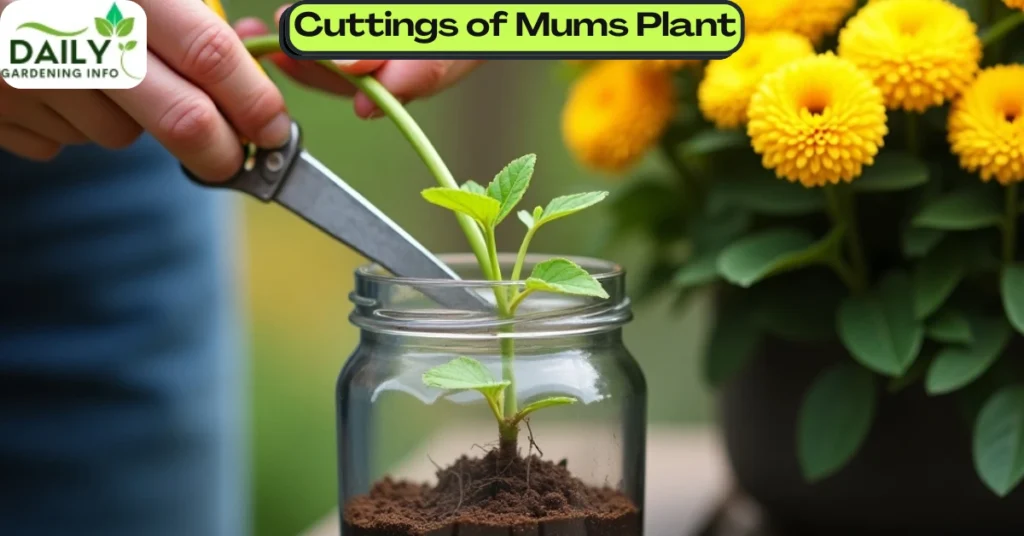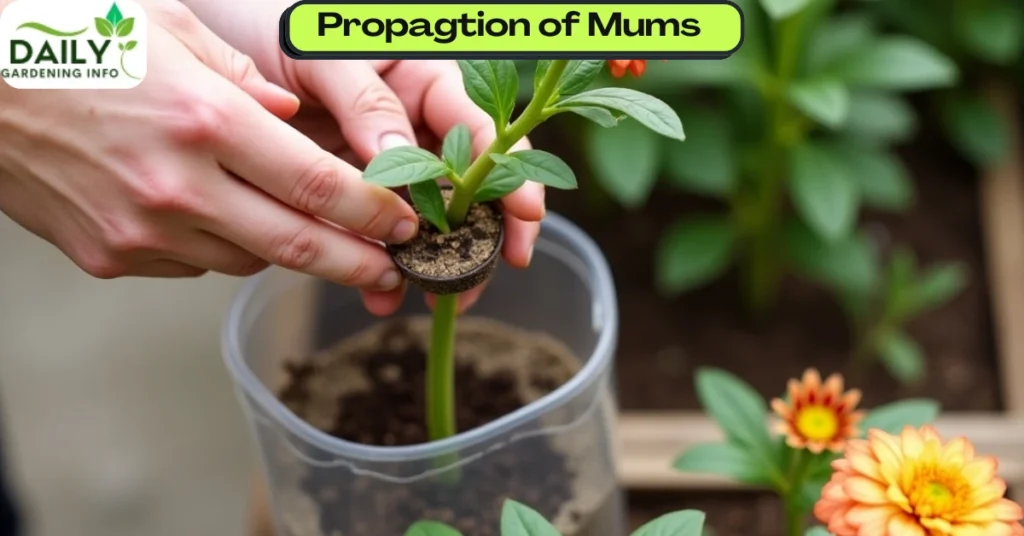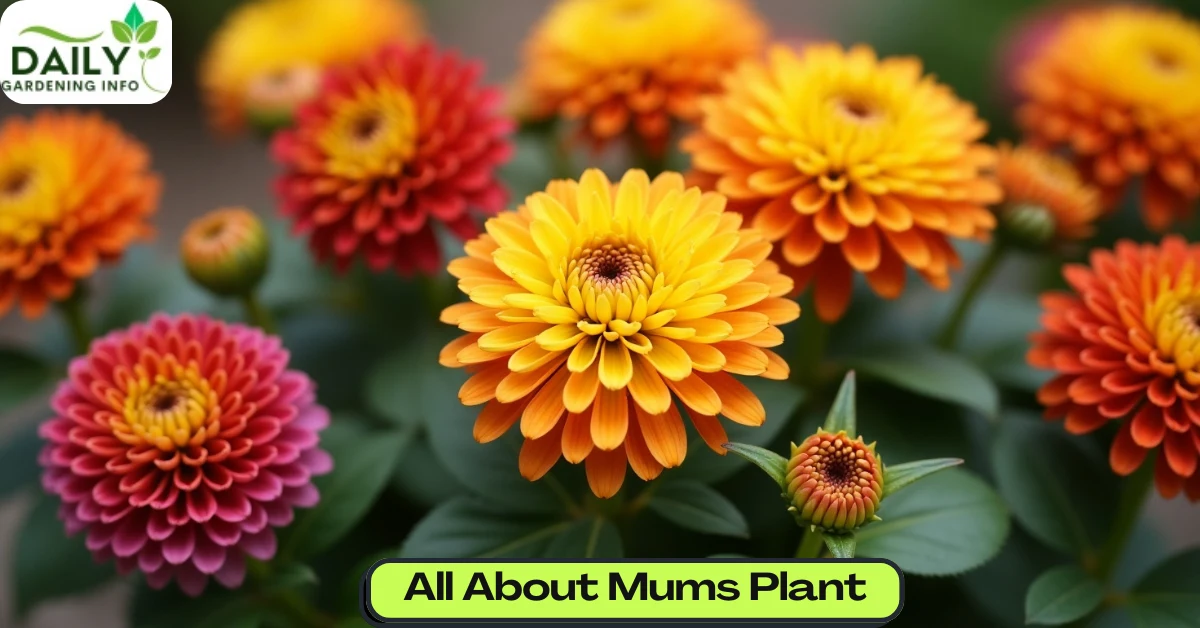The Mum plant, scientifically known as Chrysanthemum, is a beloved garden flower admired for its vibrant blooms and versatility. Whether you’re a seasoned gardener or a beginner, exploring all about Mums plant can equip you with the knowledge to cultivate these stunning flowers successfully. Available in a spectrum of colors—such as yellow, crimson, purple, and white—mums bring a burst of beauty to gardens, patios, and even indoor spaces.
These hardy perennials thrive in cooler fall months, making them a popular choice for seasonal displays. This guide covers everything you need to know all about Mums plant, from their characteristics and varieties to planting tips, care routines, and creative decorating ideas.
What Are Mum Plants?
Mums, or chrysanthemums, are flowering perennials cherished for their resilience and eye-catching blooms. Native to Asia and parts of Europe, they have been cultivated for centuries and hold cultural significance in many regions. Mums are easy to grow, adaptable to various conditions, and perfect for adding long-lasting color to outdoor and indoor spaces. With proper care, these plants can bloom year after year, making them a staple in gardens and container displays.
Key Characteristics of Mum Plants
Mums come in diverse flower forms, including daisy-like, pom-pom, and spider-shaped blooms. They typically grow between 1 and 3 feet tall, with green leaves that range from broad to narrow. Their adaptability to different climates and soil types makes them suitable for gardeners of all skill levels. Whether planted in garden beds or pots, mums are a low-maintenance option for enhancing your landscape.
Popular Chrysanthemum Varieties
Selecting the right Mum plant variety can elevate your garden’s aesthetic. Here are some standout options to consider:
- ‘Sheffield Pink’: Known for its soft pink flowers, this variety blooms from late summer to fall and thrives in full sun.
- ‘George G. W. Bush’: Features bright yellow blooms, perfect for sunny spots and adding cheerful color.
- ‘Dark Bronze’: Offers rich bronze petals and excellent drought resistance once established.
- ‘Mum’s the Word’: Boasts unique, colorful blooms that attract pollinators like bees and butterflies.
Each variety brings its own charm, so choose based on your climate, garden style, and color preferences.
How to Care for Mum Plants
Proper care ensures your Mum plants thrive and produce abundant blooms. Here’s a detailed breakdown of their maintenance needs:
Watering Mum Plants
Mums require consistent moisture, especially during dry spells. In fall, reduce watering to once every few days, focusing on deep irrigation to strengthen roots for winter. Avoid overwatering, as soggy soil can lead to root rot.
Fertilizing for Healthy Growth
Apply a low-nitrogen, high-phosphorus fertilizer (e.g., 5-10-10) in early fall to encourage blooming. Organic options like compost or well-rotted manure also enrich the soil, promoting robust plants.
Protecting Mums from Frost
Shield your mums from frost by covering them with a frost cloth or lightweight fabric during cold snaps. This extends their blooming period and protects delicate foliage.
Mulching for Insulation
Before the first frost, add a 2-3 inch layer of organic mulch—such as straw, shredded bark, or leaves—around the base. Mulch retains moisture, regulates soil temperature, and safeguards roots from freezing.
Pruning for Longevity
After frost, trim dead stems to 3-4 inches above the ground. This prevents disease and encourages vigorous spring growth.
Propagating Mum Plants: Step-by-Step
Propagating mums is a cost-effective way to expand your collection. You can use division or cuttings—both methods are straightforward with the right approach.
Cuttings
In early summer, snip a 4-6 inch section from a healthy stem, just below a leaf node. Remove lower leaves, dip the cut end in rooting hormone (optional), and plant in moist soil. Roots typically develop within a few weeks.

Division
In spring or fall, dig up mature Mum plants and separate them into smaller clumps, ensuring each section has healthy roots. Replant immediately in well-draining soil.
Propagation Tips
- Provide bright, indirect sunlight.
- Maintain a temperature of around 70°F (21°C).
- Be patient—successful rooting takes time but yields rewarding results.

Planting Mum Plants: A Detailed Guide
Timing and technique are critical for establishing healthy Mum plants. Follow these steps for optimal results.
When to Plant Mums
The best time to plant mums is in spring, after the last frost. This allows roots to establish before summer heat and ensures vibrant fall blooms. Fall planting is possible but less ideal, as plants may struggle to root before winter.
How to Plant Mums
- Select a Sunny Location: Mums need at least 6 hours of direct sunlight daily. Avoid shady spots, which can weaken plants and reduce blooms.
- Prepare Well-Draining Soil: Test soil pH (ideal range: 6.0-7.0) and amend with compost if needed. Raised beds work well for poor-draining areas.
- Dig the Hole: Make it twice as wide as the root ball and the same depth. Space plants 18-24 inches apart for airflow.
- Position the Plant: Set the crown level with the soil surface to prevent rot.
- Backfill and Water: Fill the hole with soil, press gently, and water thoroughly to settle the roots.
- Add Mulch: Apply mulch to conserve moisture and suppress weeds.
Keeping Mum Plants Blooming
To maximize bloom time, follow these tips:
- Deadhead Regularly: Remove faded flowers to redirect energy into new blooms.
- Fertilize Sparingly: Use a balanced 10-10-10 fertilizer every 4-6 weeks during the growing season, avoiding excess nitrogen.
Growing Mum Plants in Containers
Mum plants adapt beautifully to containers, making them ideal for patios or small spaces. Use pots 12-18 inches wide with drainage holes, filled with a mix of potting soil and perlite. Place them in a sunny spot and water consistently.
Decorating with Mum Plants
Mums are versatile for home and garden decor. Try these ideas:
- Potted Displays: Arrange colorful mums on porches or entryways.
- Window Boxes: Combine mums with trailing plants for a vibrant look.
- Centerpieces: Use low pots of mums for elegant table settings.
Common Problems and Solutions
Mum plants are hardy but can face challenges. Here’s how to address them:
Powdery Mildew
- Symptoms: White coating on leaves.
- Solution: Improve airflow, water at the base, and apply a fungicide if needed.
Pests (Aphids, Spider Mites etc)
- Solution: Inspect regularly, use insecticidal soap, or introduce beneficial insects like ladybugs.
Weed Control
Hand-pull weeds or use landscape fabric to keep beds tidy.
Indoor Gardening with Mum Plants
For indoor mums, ensure 6+ hours of sunlight (or use grow lights), maintain 65-70°F, and keep humidity moderate with a tray of water nearby.
Benefits of Mum Plants
Beyond their beauty, Mum plants improve air quality by filtering toxins and support pollinators like bees, enhancing biodiversity. Gardening with mums also reduces stress, offering a therapeutic connection to nature.
Conclusion
All about Mum plants reveals their value as resilient, beautiful additions to any space. With the right care—proper planting, watering, and maintenance—they thrive through seasons, delivering vibrant color and environmental benefits. Whether in gardens, pots, or indoors, chrysanthemums are a rewarding choice for enhancing your surroundings and supporting a healthier ecosystem.

Leave a Reply